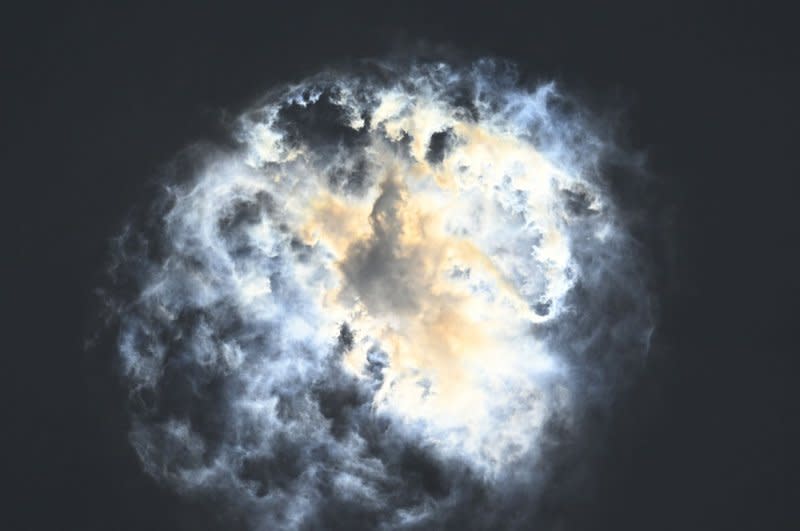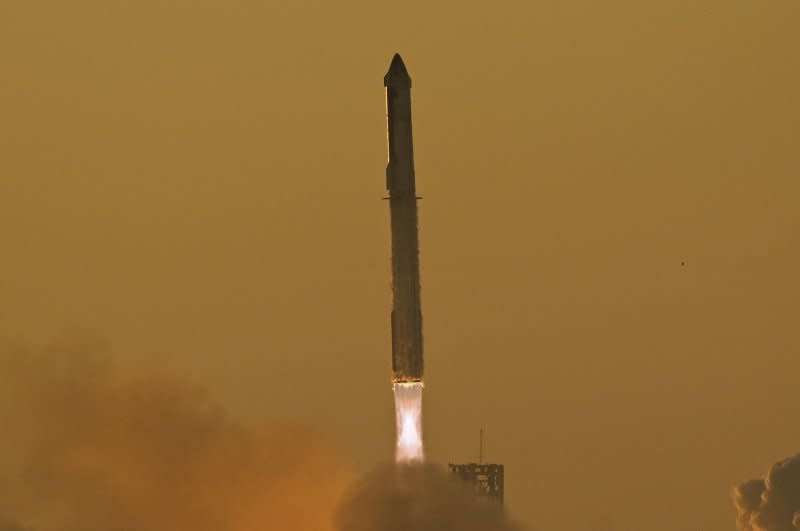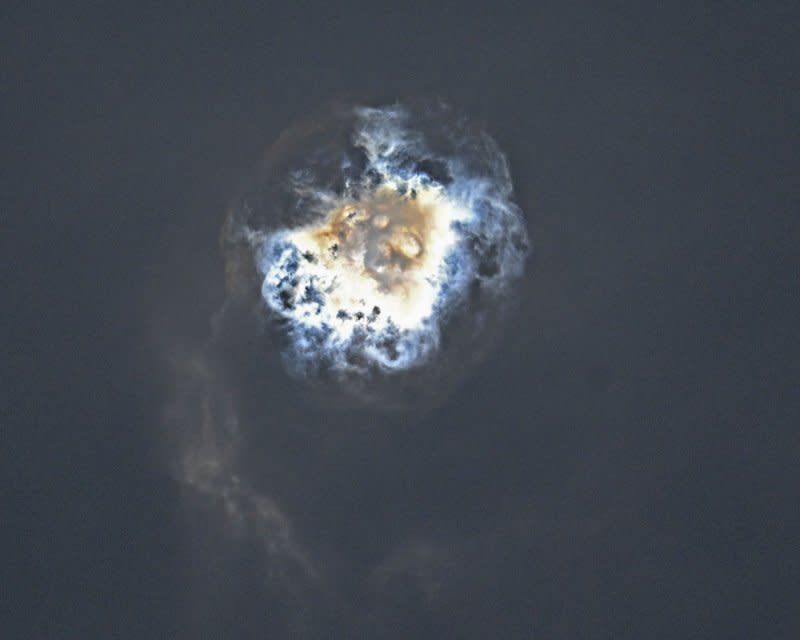SpaceX Starship disintegrates after successful stage separation

Nov. 17 (UPI) -- SpaceX's Starship spacecraft test launch ended with "rapid unscheduled disassembly," Saturday when the booster stage and spacecraft disintegrated shortly after completing a successful stage separation.
The Starship test launch was originally planned for Friday but had to be delayed as technicians replaced a grid fin actuator, according to SpaceX CEO Elon Musk.
In April, the first integrated flight test Starship launch also ended with the spacecraft disintegrating shortly after launch.
SpaceX spent months waiting for the Federal Aviation Administration to clear the Starship for a second test flight and was approved Wednesday.
The Starship lifted off from SpaceX's Texas launch facility atop a super heavy-lift booster rocket, at about 7 a.m.

SpaceX live-streamed the launch starting 35 minutes prior to the launch window.

Watch Starship's second integrated flight test → https://t.co/bJFjLCiTbK https://t.co/cahoRQ72lm— SpaceX (@SpaceX) November 18, 2023

The booster completed a "hot stage" maneuver and successfully detached from the rest of the spacecraft approximately 2 minutes and 49 seconds after liftoff.
The booster then exploded at approximately 3 minutes and 20 seconds into flight.

About 13 minutes after launch, SpaceX announced that both the booster and Starship had experienced "RUD" or rapid unscheduled disassembly.
Saturday's launch was intended to test the Starship on a suborbital trajectory that would have taken the Starship into space but not into orbit.
The spacecraft is intended to be reuseable and to carry astronauts across long distances in space.
The FAA released a preliminary statement Saturday explaining that "a mishap occurred during the SpaceX Starship OFT-2 launch."
"The anomaly resulted in the loss of the vehicle. No injuries or public property damage have been reported," the FAA continued.
The FAA will oversee SpaceX's investigation into the destruction of the spacecraft.
"A return to flight of the Starship Super Heavy vehicle is based on the FAA determining that any system, process, or procedure related to the mishap does not affect public safety," the FAA continued.

